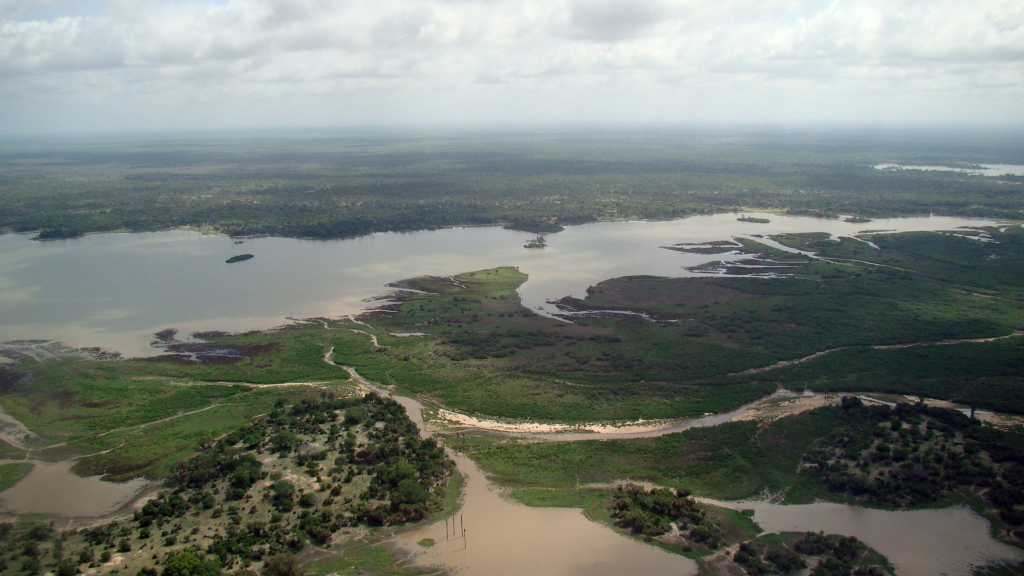The Selous Game Reserve with its 50 000 km2 is one of the largest protected areas in Africa, and has different types of vegetation: forest, swamp, wooded meadow, dense thicket.
In addition to the large community of elephants, black rhinos, wild dogs, buffaloes, Nile crocodiles, giraffes, cheetahs, hippos, antelopes ... and 350 species of birds live there.
In this uncrowded reserve, you can choose from safaris: by boat, 4x4, on foot or on several days camping.
As a UNESCO World Heritage site, biodiversity remains preserved thanks to the low human impact (no permanent dwellings); only 8% in the north are reserved for observation safaris (mainly safari lovers who accept more random searches but want to find the atmosphere of the first explorers), the majority of the property is a hunting reserve whose quotas are scientifically controlled.
The parks of Southern Tanzania (and the Selous Game Reserve) are often neglected and yet they have many tourist and faunistic attractions. In addition, there are species absent or rarely seen in the north as wild dogs, roan antelopes, sable antelopes ...
And above all, these parks and reserves "southerners" remain much less visited than their counterparts of the North and thus allow to experiment safaris a little more authentic ...
- If the junction between the southern parks and game reserves and the parks of the North can not be done quickly and reasonably than flying, which obviously adds some costs, they can however be easily combined with a cultural-seaside stay in Zanzibar ...
- The park of Mikumi can be visited on a weekend departing from Dar es Salaam.
- A two- or three-day safari in the Mikumi appeals to travellers on a limited budget, who have little time to spend on their trip, or who want to be sure to see a wide variety of animals in a short time.
Tanzania, the African pearl
Ten million years ago the tectonic forces formed the great fault of the Rift. It was then that landscapes were sculpted over millennia and life began. Indisputable wild sanctuary, Tanzania can boast of possessing the greatest concentration of animals on earth. Conscious of this asset, it devotes 25% of its area to national parks and reserves. To this is added Zanzibar, an enchanting and bewitching island, bordered by miles of white sand and rocked by history.
When to go ?
Tanzania has a generally comfortable tropical climate year-round, although there are significant regional variations.
- Along the warmer and humid coast, the climate is determined in large part by the monsoon winds, which bring rains in two major periods.
- During the long rain season, from mid-March to May, it rains heavily almost every day, although seldom for the whole day, and the air can get unpleasantly sticky.
- During the short rain season during November, December and sometimes into January, the rain is lighter.
The best times to visit Zanzibar are from July to October and from December to March.
Formalities
- A passport valid for at least 6 months from the date of arrival in Tanzania is required by the Tanzanian authorities.
- The visa application must be submitted to the Tanzanian Embassy in the country of residence. However, when the traveller does not have the possibility to apply for a visa before departure, he can obtain it at certain border posts (to be paid in US Dollars):
- At the international airport of Dar es Salaam, Zanzibar and Kilimanjaro
- At the ports of Dar es Salaam, Zanzibar and Kigoma
Health
- No vaccination is mandatory but some vaccinations are recommended; Yellow fever vaccination is mandatory for all travellers from a country where endemic yellow fever is present but may be advised to all travellers. To avoid any inconvenience, it is strongly recommended to be up to date for yellow fever vaccination and to be in possession of an international vaccination booklet.
- Antimalarial treatment is recommended (see your doctor).
Currency
The monetary unit is the Tanzanian shilling (TSH) which is divided into 100 cents.
Credit cards are only accepted in certain hotels and restaurants in major cities. Travellers checks are very difficult to change. It is therefore strongly recommended to bring in foreign currency. Most payments can be made directly in US dollars from series after 2006. Banks and foreign exchange offices realize the exchange of your currencies. Never change money from intermediaries in the street, but only in exchange offices and banks.
Attention: Park fees as well as some lodges and hotel must be paid in US$.
